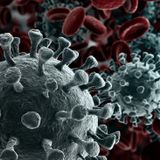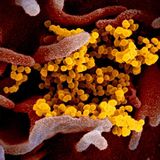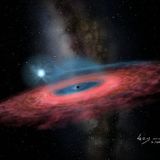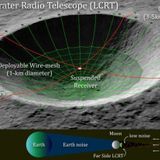RECENT ARTICLES

How experts plan to treat the new coronavirus
Live Science is supported by its audience. When you purchase through links on our site, we may earn an affiliate commission. .As the coronavirus outbreak in China continues to spread, having infected over 24,000 people so far, scientists around the world are racing to find a treatment. Most of the people infected with the new coronavirus, dubbed 2019-nCov, have not received a treatment specific to that — because there isn't one. In fact, none of the handful of coronaviruses known to infect humans has an approved treatment, and people who are infected typically receive care mainly to...…Live Science is supported by its audience. When you purchase through links on our site, we may earn an affiliate commission. .As the coronavirus outbreak in China continues to spread, having infected over 24,000 people so far, scientists around the world are racing to find a treatment. Most of the people infected with the new coronavirus, dubbed 2019-nCov, have not received a treatment specific to that — because there isn't one. In fact, none of the handful of coronaviruses known to infect humans has an approved treatment, and people who are infected typically receive care mainly to...WW…

Scientists discover largest bacteria-eating virus. It blurs line between living and nonliving.
Live Science is supported by its audience. When you purchase through links on our site, we may earn an affiliate commission. .Huge bacteria-killing viruses lurk in ecosystems around the world from hot springs to freshwater lakes and rivers. Now, a group of researchers has discovered some of these so-called bacteriophages that are so large and so complex that they blur the line between living and nonliving, according to new findings.Bacteriophages, or "phages" for short, are that specifically infect . Phages and other viruses are not considered living organisms because they can't carry out...…Live Science is supported by its audience. When you purchase through links on our site, we may earn an affiliate commission. .Huge bacteria-killing viruses lurk in ecosystems around the world from hot springs to freshwater lakes and rivers. Now, a group of researchers has discovered some of these so-called bacteriophages that are so large and so complex that they blur the line between living and nonliving, according to new findings.Bacteriophages, or "phages" for short, are that specifically infect . Phages and other viruses are not considered living organisms because they can't carry out...WW…

Images of new coronavirus just released
TrendingLive Science is supported by its audience. When you purchase through links on our site, we may earn an affiliate commission.This scanning electron microscope image shows SARS-CoV-2 (yellow) among human cells (pink). This virus was isolated from a patient in the U.S. (Color has been added to the image to better show the virus and its environment.)(Image: © NIAID-RML)On Thursday (Feb. 13), the Rocky Mountain Laboratories (RML) at the National Institute of Allergy and Infectious Diseases revealed some of the first images of SARS-CoV-2, the new coronavirus that has sickened over 60,000...…TrendingLive Science is supported by its audience. When you purchase through links on our site, we may earn an affiliate commission.This scanning electron microscope image shows SARS-CoV-2 (yellow) among human cells (pink). This virus was isolated from a patient in the U.S. (Color has been added to the image to better show the virus and its environment.)(Image: © NIAID-RML)On Thursday (Feb. 13), the Rocky Mountain Laboratories (RML) at the National Institute of Allergy and Infectious Diseases revealed some of the first images of SARS-CoV-2, the new coronavirus that has sickened over 60,000...WW…

Stellar Black Hole Is So Massive It Shouldn't Exist
Live Science is supported by its audience. When you purchase through links on our site, we may earn an affiliate commission. .Editor's Note: The findings of this study because of a potential error in the analysis of starlight from the companion star. That error would mean the black hole is about the size of our sun, rather than 70 times the mass of our sun.A gigantic stellar 15,000 light-years from Earth is twice as massive as what researchers thought was possible in our own galaxy.The black hole is 70 times more massive than the sun, the scientists wrote in a new study. Previously,...…Live Science is supported by its audience. When you purchase through links on our site, we may earn an affiliate commission. .Editor's Note: The findings of this study because of a potential error in the analysis of starlight from the companion star. That error would mean the black hole is about the size of our sun, rather than 70 times the mass of our sun.A gigantic stellar 15,000 light-years from Earth is twice as massive as what researchers thought was possible in our own galaxy.The black hole is 70 times more massive than the sun, the scientists wrote in a new study. Previously,...WW…

NASA funds proposal to build a telescope on the far side of the moon
Live Science is supported by its audience. When you purchase through links on our site, we may earn an affiliate commission. .NASA is funding an early-stage proposal to build a meshed telescope inside a crater on the far side of the moon, .This "dark side" is the face of the moon that is permanently positioned away from , and as such it offers a rare view of the dark cosmos, unhindered by radio interference from humans and our by our planet's thick atmosphere. The ultra-long-wavelength radio telescope, would be called the "Lunar Crater Radio Telescope" and would have "tremendous"...…Live Science is supported by its audience. When you purchase through links on our site, we may earn an affiliate commission. .NASA is funding an early-stage proposal to build a meshed telescope inside a crater on the far side of the moon, .This "dark side" is the face of the moon that is permanently positioned away from , and as such it offers a rare view of the dark cosmos, unhindered by radio interference from humans and our by our planet's thick atmosphere. The ultra-long-wavelength radio telescope, would be called the "Lunar Crater Radio Telescope" and would have "tremendous"...WW…
- Total 5 items
- 1